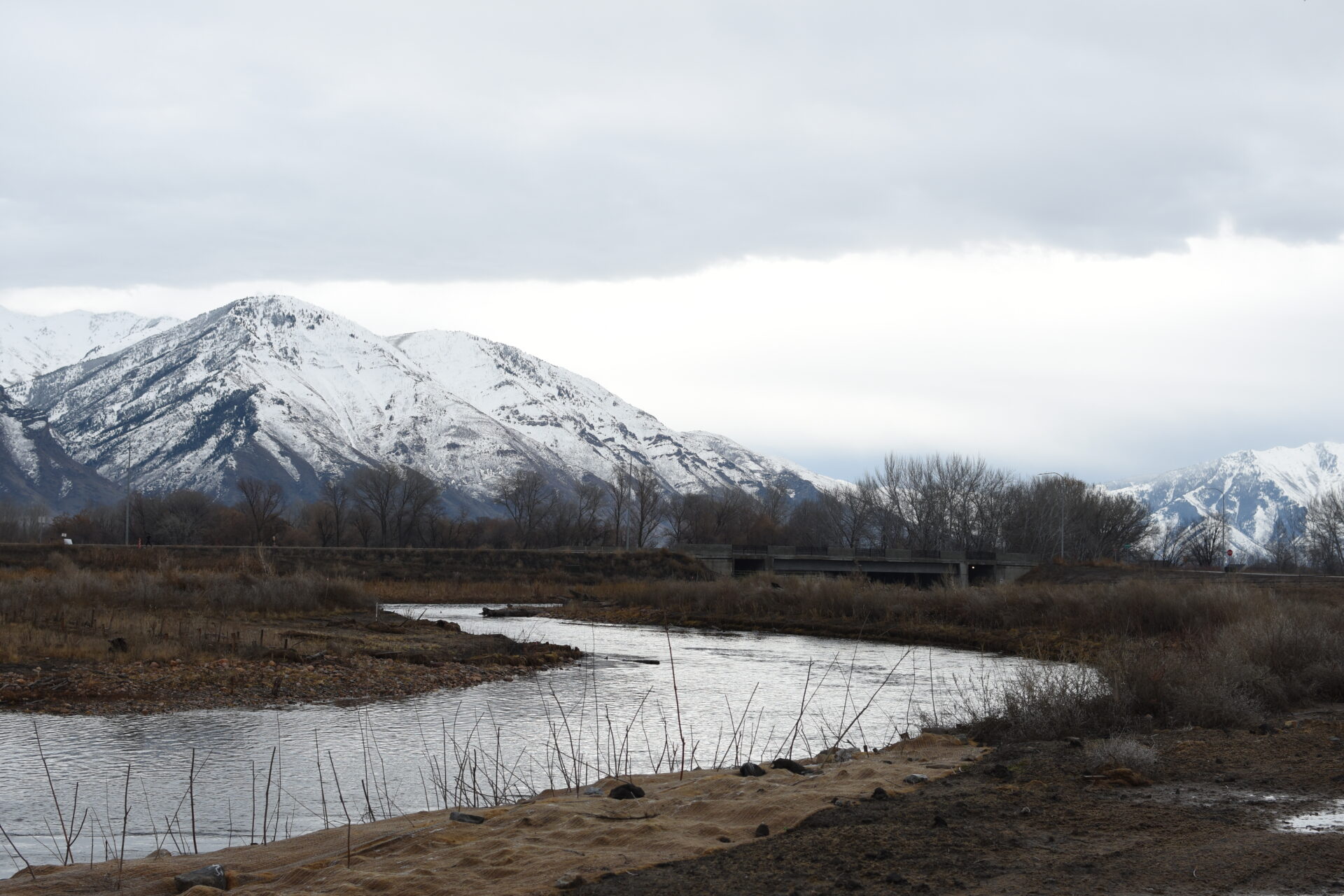
The Provo River Delta project, a natural restoration project meant to protect native fish and increase recreation opportunities at Utah Lake, is slated for completion in late 2024.
The project remains on schedule despite early-year rain and snow, Mike Mills, executive director of the Utah Reclamation Mitigation and Conservation Commission, said. According to its website, the commission is a government entity that provides funding for ecological restoration projects in Utah.
“We have a schedule, and even with our delays that we built into it, we’re looking at probably early November to be able to have kind of a grand opening,” Mills said.
As of February 2024, restoration of the delta area was completed and now those involved with the project are developing the landscaping and recreation area, Mills said.
The Provo River Delta is located on roughly 260 acres of farmland-turned-wetland between Utah Lake State Park and Provo High School. The project will help recover the June Sucker, a threatened fish native to Utah Lake.
The Utah Mitigation Commission works with agencies such as the June Sucker Recovery Implementation Program to manage conservation efforts, according to the program’s website.
The June Sucker was listed as an endangered species in April 1986 because of urban growth, predation from non-native species like carp and water development projects. However, captive breeding efforts and large-scale efforts, such as the delta project and Hobble Creek restoration, downgraded the species to threatened in 2020, according to the June Sucker Recovery Implementation Program.
“The delta really represents our last bottleneck that we need to overcome to [help] the species hopefully recover,” Russ Franklin, assistant director of the June Sucker Recovery Implementation Program, said. “Our greatest challenge right now is what they call ‘natural recruitment.’”
Until recently, the June Sucker has lacked natural cover because the Provo river is so channelized, Franklin said.
June Suckers swim up the Provo river to spawn and baby larval fish float down the river into Utah Lake. The larval fish are often eaten by invasive fish species such as carp, resulting in a declining population. According to Franklin, the delta should help larval fish naturally reproduce by covering them from predator fish.
“We’re doing the best that we can to try to restore vegetation so that there will be a natural balance between those juvenile June Suckers up until the time that they get about (a foot and a half long) where they can go feed out in the open water and they no longer fit down most fishes gullets,” Mark Belk, BYU biology professor, said about the project.
Captive breeding efforts should be supplemented by natural population growth within a few years, resulting in a stable population of June Suckers, Belk said.
The project will also provide several recreational options including fishing, non-motorized boating and a walking and biking path, Mills said.
“For your average person, this is going to be a recreation destination that will really become another access point for Utah Lake. A place to see birds, walk your dog, go kayaking, all kinds of things,” Mills said. “And that’s cool when you can do something that benefits multiple aspects of society.”’
The natural delta area construction has already been completed and construction crews are working on landscaping and recreation areas, according to Mills. Once complete, the area will get a grand opening and be considered a public park.




